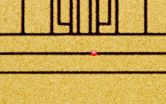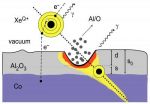(Press-News.org) An article in the current issue of Global Change Biology Bioenergy examines the carbon sequestration potential of Miscanthus plantations on commercial farms.
Researchers evaluated Miscanthus plantations in Ireland, where planting has been subsidized by the government. Carbon sequestration is expected to vary among different farming practices and soil characteristics. They found significant soil carbon sequestration under Miscanthus on both former tilled land and former grasslands after only two years of planting with little evidence that its introduction contributes to the carbon debt. The authors speculate that soil organic carbon lost when grassland is converted to Miscanthus can be regenerated within 4 to 5 years.
According to lead author, Jesko Zimmermann, "The finding that soil carbon loss due to Miscanthus establishment does not significantly add to the carbon debt, even when planted on grassland, is very important for the development of this biomass crop. Cultivating Miscanthus on permanent grasslands of moderate soil organic carbon content reduces competition for land with food crops while simultaneously limiting the release of greenhouse gases."
This research is valuable for calculating the carbon mitigation potential of Miscanthus. It also underlines the importance of planning and management of bioenergy on a local basis, considering not only climate but also soil conditions and farming practices.
###
The special issue of Global Change Biology Bioenergy in which this article appears focuses on the impact of land use change for bioenergy production on greenhouse gas emissions. Global Change Biology Bioenergy is a bimonthly journal that focuses on the biological sciences and the production of fuels directly from plants, algae, and waste. For more information please visit www.gcbbioenergy.org and www.twitter.com/gcb_bioenergy.
Farming commercial miscanthus
2011-09-01
ELSE PRESS RELEASES FROM THIS DATE:
'Gene overdose' causes extreme thinness
2011-09-01
Scientists have discovered a genetic cause of extreme thinness for the first time, in a study published today in the journal Nature.
The research shows that people with extra copies of certain genes are much more likely to be very skinny. In one in 2000 people, part of chromosome 16 is duplicated, making men 23 times and women five times more likely to be underweight.
Each person normally has a copy of each chromosome from each parent, so we have two copies of each gene. But sometimes sections of a chromosome can be duplicated or deleted, resulting in an abnormal 'dosage' ...
Doctors' and nurses' hospital uniforms contain dangerous bacteria majority of the time, study shows
2011-09-01
Washington, DC, August 31, 2011 – More than 60 percent of hospital nurses' and doctors' uniforms tested positive for potentially dangerous bacteria, according to a study published in the September issue of the American Journal of Infection Control, the official publication of APIC - the Association for Professionals in Infection Control and Epidemiology.
A team of researchers led by Yonit Wiener-Well, MD, from the Shaare Zedek Medical Center in Jerusalem, Israel, collected swab samples from three parts of the uniforms of 75 registered nurses (RNs) and 60 medical doctors ...
MIABE standard opens up new opportunities in drug discovery
2011-09-01
AUDIO:
This audio file is a brief interview with MIABE coauthors Sandra Orchard, John Overington, Dominic Clark and Christoph Steinbeck of the EMBL-European Bioinformatics Institute. They briefly discuss the potential impact...
Click here for more information.
An international consortium of pharmaceutical companies, public and commercial data providers and academic groups has agreed on a new standard for describing the effect of a compound on a biological entity. Published in ...
ESC Congress 2011 highlights
2011-09-01
Paris, France, 31 August 2011: "The ESC Congress 2011 in Paris has been a record breaking event" said Prof Michael Böhm, chairman of the ESC Congress Programme Committee. "With a total attendance of 32 946 participants, this is our largest congress ever. We are especially pleased to see that more and more delegates are coming from outside Europe. Large delegations came from Brazil, Japan, China and India this year," said Prof Böhm.
"The quality of the scientific content at the ESC Congress attracts more and more participants each year," explained Prof Böhm. "The medical ...
Researcher identifies nearly 100 studies supporting use of thermal ablation to treat lung cancer
2011-09-01
(Providence, R.I.) – The journal Radiology will publish in its September issue an article written by Damian E. Dupuy, M.D., director of tumor ablation at Rhode Island Hospital, supporting the use of ablation procedures for the treatment of lung cancer. The article, "Image-guided Thermal Ablation of Lung Malignancies," reviews the results of nearly 100 studies conducted between 1991 and 2011 that conclude that image-guided ablation for lung cancer is a successful alternative for patients who cannot withstand surgery due to advanced age or medical comorbidities.
Percutaneous ...
Successful rainwater harvesting systems should combine new technology with old social habits
2011-09-01
As a crippling drought grips much of the Southern and Southwestern United States, the population continues to grow and water resources become scarcer. One way to address the problem is by a combination of modern engineering and ancient social principles, outlined in a new paper on rainwater harvesting that will be presented at the 2011 ASME International Mechanical Engineering Congress and Exposition.
Author John Whear, biomedical engineer at the Cancer Therapy & Research Center at The University of Texas Health Science Center at San Antonio, examines how to manage rainwater ...
NIST achieves record-low error rate for quantum information processing with one qubit
2011-09-01
Thanks to advances in experimental design, physicists at the National Institute of Standards and Technology (NIST) have achieved a record-low probability of error in quantum information processing with a single quantum bit (qubit)—the first published error rate small enough to meet theoretical requirements for building viable quantum computers.
A quantum computer could potentially solve certain problems that are intractable using today's technology, even supercomputers. The NIST experiment with a single beryllium ion qubit, described in a forthcoming paper,* is a milestone ...
Researchers expand capabilities of miniature analyzer for complex samples
2011-09-01
It's not often that someone can claim that going from a positive to a negative is a step forward, but that's the case for a team of scientists from the National Institute of Standards and Technology (NIST) and private industry. In a recent paper,* the group significantly extended the reach of their novel microfluidic system for analyzing the chemical components of complex samples. The new work shows how the system, meant to analyze real-world, crude mixtures such as dirt or whole blood, can work for negatively charged components as well as it has in the past for positively ...
Ion armageddon: Measuring the impact energy of highly charged ions
2011-09-01
Much like a meteor impacting a planet, highly charged ions hit really hard and can do a lot of damage, albeit on a much smaller scale. And much like geologists determine the size and speed of the meteor by looking at the hole it left, physicists can learn a lot about a highly charged ion's energy by looking at the divots it makes in thin films.
Building upon their work for which they were recently awarded a patent,* scientists at the National Institute of Standards and Technology (NIST) and Clemson University have measured the energy of highly charged ion impacts on a ...
Solar industry responsible for lead emissions in developing countries
2011-09-01
Solar power is not all sunshine. It has a dark side—particularly in developing countries, according to a new study by a University of Tennessee, Knoxville, engineering professor.
A study by Chris Cherry, assistant professor in civil and environmental engineering, found that solar power heavily reliant on lead batteries has the potential to release more than 2.4 million tons of lead pollution in China and India.
Lead poisoning causes numerous adverse health effects, including damage to the central nervous system, the kidneys, the cardiovascular system, and the reproductive ...


